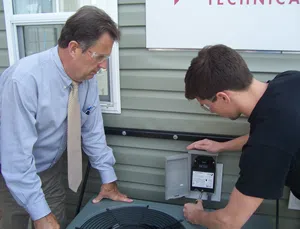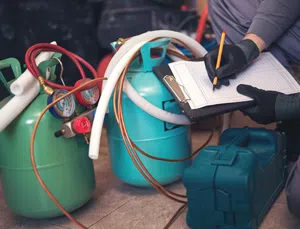There are many missed recruitment opportunities in this industry — you just have to know where to look.
As if finding qualified, entry-level technicians has not been hard enough over the years, the COVID-19 pandemic has made this challenge even more daunting. It is highly probable that recruiting talent for our industry will remain as one of the major concerns for company owners for the foreseeable future. There are things these employers can do, however, to alleviate the shortage.
It is often assumed that the recruitment problem is more prevalent in smaller companies, but the fact of the matter is that even the largest HVACR contractors struggle as well. Typically, larger companies can offer more enticing salary and benefit packages to their employees but, even with tempting perks, all indications are clear: this is an industry-wide problem.
The purpose of this article is to highlight some missed recruitment opportunities, while providing possible solutions.
Industry Awareness
When the World Health Organization (WHO) declared COVID-19 a pandemic, a large percentage of the American workforce found themselves working one day and ordered to stay at home the next. While many Americans watched the pandemic unfold from the safety and comfort of their homes, a small percentage of the workforce was mandated to maintain their normal work schedule. This essential workforce included HVACR service personnel.
A year ago, the United States experienced the greatest employment loss since the Great Depression. In the face of record layoffs and uncertainty, HVACR employers continued to struggle to fill vacant positions, demonstrating the undeniable disconnect between the HVACR industry and those it seeks to recruit.
The key to bridging the HVACR employment gap is effective communication. To accomplish this, manufacturers can dedicate a small portion of their advertising budget, to public awareness of our industry and career opportunities. Industry associations can collaborate to develop recruitment materials, that can be used by schools, guidance counselors, HVACR employers and their staff.
Quite often, the only face-to-face connection between the HVACR industry and the public, is made via the service technician.
What the service technician displays is what the public sees. Perception is reality! Armed with literature and firsthand industry experience, our field personnel should be ready to discuss with interested parties the many benefits and opportunities that our field has to offer.
Other opportunities for contractors to promote our industry include banners on their websites and even on their service vehicles.
Essential Industry
HVACR service personnel were declared essential as American food, health and communications networks relied heavily on their skills. This declaration provided the opportunity for the industry to educate the public on how refrigeration equipment is required to safely store, transport and protect the nutritional and medical resources we all require.
In addition, this was the time to explain how keeping data centers cool, which allows for online meetings, classes, internet and streaming services to function, is the responsibility of HVACR service technicians.
Industry organizations could develop public service announcements as part of a national campaign, to alert the public how the HVACR industry is working diligently to help keep everyone and their loved ones safe. In today’s digital age, campaigns such as these can be created quickly, without large financial commitments.
As medical facilities made it known that the demand for ICU beds has continued to increase, the HVACR industry missed another opportunity to explain what an airborne infection isolation room is and how our field service personnel are responsible for servicing and maintaining them, to help prevent the spread of infectious diseases.
Now, with new vaccines making the news, Americans are quickly learning about the temperature requirements at research, transportation and storage facilities, as well as at the locations where they are ultimately administered. This was yet another opportunity to explain how the work performed by our industry is essential.
Can your refrigerator at home store a vaccine at -100F? Getting the word out about the specialty work our industry performs is the responsibility of all of us. Large industry associations, however, are best equipped to get this information to the masses. They have the ability to, among other things, provide major media outlets with information regarding airborne infection isolation rooms and who is responsible for maintaining these specialty systems.
Industry organizations could seize the opportunity to work with local contractors, to communicate this important message at the local level. Even those not directly working on these highly specialized air conditioning and refrigeration systems have the opportunity and obligation, to help make the public aware of what we do.
While these examples may not have been obvious at the time, they will hopefully provide you with some powerful recruitment talking points for future discussions.
Whose Job to Recruit?
Now that we are armed with these compelling recruitment arguments, whose job is it to recruit technicians into the industry?
Over the course of the last few years, at various conferences, meetings and events, I had the opportunity to ask large groups of contractors, employers and other industry stakeholders, “whose job is it to recruit technicians into the HVACR industry?” The overwhelming response indicated that the job of recruitment, fell upon the instructors of HVACR programs.
Based solely on this response, the job of recruiting for an entire industry would fall upon the instructors at roughly 1,000 HVACR programs. There are several problems with this scenario. Most programs have one full-time instructor, who runs a day program, a night program or both. Many schools hire adjunct instructors who have full-time day jobs and teach classes in the evening. There is little, if any, time to go out and recruit.
Even if every instructor could free up one full day a week, they would still have the overwhelming task of visiting more than 37,000 high schools in the United States to promote a career in our industry.
The truth of the matter is that the recruiting of technicians into the HVACR industry is the responsibility of everyone involved in the industry, most importantly, employers.
These business leaders know more than anyone what they are looking for in an entry- level technician. These employers can focus their efforts, however, by working with schools that already offer an HVACR program.
Your Local HVACR Program
Working with local HVACR programs, filled with students that have already made the choice to join our industry, simplifies your recruitment efforts. It is easy to get involved with local HVACR programs, through their program advisory committee.
These committees meet periodically, where the instructional team present an overview of the courses offered, hours, laboratory equipment and program outcomes. It is at these meetings where participating industry stakeholders can have an impact on the quality of training and build relationships with the programs and their instructors.
Those who participate can see potential technicians in action and evaluate their inherent talent, temperament and work ethic while they are still in school.
Find Your Local Vocational Program!
Get involved on the local level with vocational schools and bolster your recruitment efforts. Click here to request a free listing of the programs in your area!
Participating offers contractors a front row seat to see if students are a good fit for their organization before they become available on the open market, often even before graduation. In addition, participating in internship or apprenticeship programs provide another opportunity to see their talents in action, prior to employment.
It should be noted, most instructors receive more calls about job opportunities, than the number of students they have. Instructors are more likely to place graduates with organizations that are members of the school’s program advisory committee, before helping other companies. Therefore, if you are not presently participating in a program advisory committee, it is imperative you begin doing so as soon as possible.
Managing Expectations
The graduates of HVACR educational programs are not journeymen. However, they have been provided a strong foundation in the competencies, skills and knowledge required for future success.
The single most important aspect of recruiting graduates from these HVACR educational programs, is the fact they have already chosen to embark on a career in the HVACR industry. The only thing employers need to focus on now, is convincing the graduates that their company offers them the best career opportunity.
Debunking Myths
American youth are continually informed that to be successful in life, they must go to college. As a result, most students make lifelong career choices, absent of supporting data. The facts state 20 percent of the jobs in the United States require a four-year degree or higher, meaning 80 percent do not! Whereas 67 percent of jobs require post-secondary technical education, in fields including HVACR.
The United States Department of Labor, Bureau of Labor Statistics, provides free, occupational data on 700 different occupations at bls.gov. The amount of information they offer may seem overwhelming at first. When typing HVAC into the search box, however, the occupational information on “Heating, Air Conditioning and Refrigeration Mechanics and Installers” is readily available.
Every employer in the HVACR industry should commit some time to familiarize themselves with this site, as it provides factual data on the opportunities in the HVACR industry. This data includes the requirements to get into the field, the job outlook (both locally and nationally), salary ranges by region and much more.
As an example, it can be found that the average salary in the United States is $19.14 per hour. Using data from the HVACR industry, one can quickly identify that, in many states, HVACR wages are higher than the national average. This information should be part of everyone’s recruitment toolbox!
When armed with reliable data, one can debunk these myths, improve recruitment and allow the truth to come out. Not all success stories being with a four-year degree!
Share your Experience
It is important to understand that, while we see the rewards in a HVACR career, others may not. Most people spend their entire day in a climate-controlled environment. Whether at home, work, shopping, traveling from place to place, participating in online meetings or safely storing their food, most Americans rely on the HVACR industry without even knowing it.
That is why it is important we enlighten them about the industry. This begins with the public awareness campaigns, advertising and word of mouth efforts. In the end, however, employers should make recruitment training an important aspect of their operations to help ensure their future success.
HVACR employers have an important story to share with everyone, whether having expressed an interest in our industry or not. They need not be afraid of getting out or getting online, to share their unique story.
Visiting high schools and speaking to students, for example, is a great way to share their unique story. Students want to learn about possible career paths, from successful individuals. This affords employers an opportunity to discuss the industry and opportunities it offers.
Additionally, they can share their personal success story, about where they received their formal HVACR education, how they got their first job, challenges they encountered along the way, how they met them and how others can achieve success as well.
Action Item
Although we can simply dwell on the missed opportunities to promote the HVACR industry over the last year, it will be far more fruitful to learn from them. We all need to work together to recruit the next generation of HVACR service technicians. If we genuinely want to solve the technician shortage, all of us must play a role in solving it.





